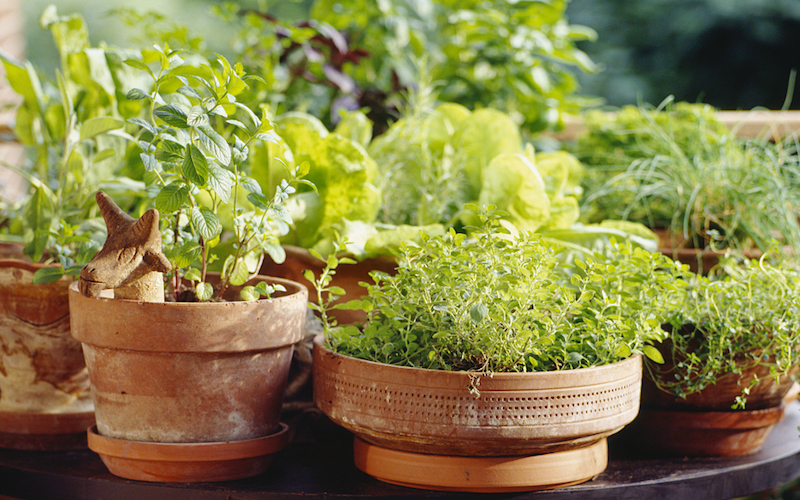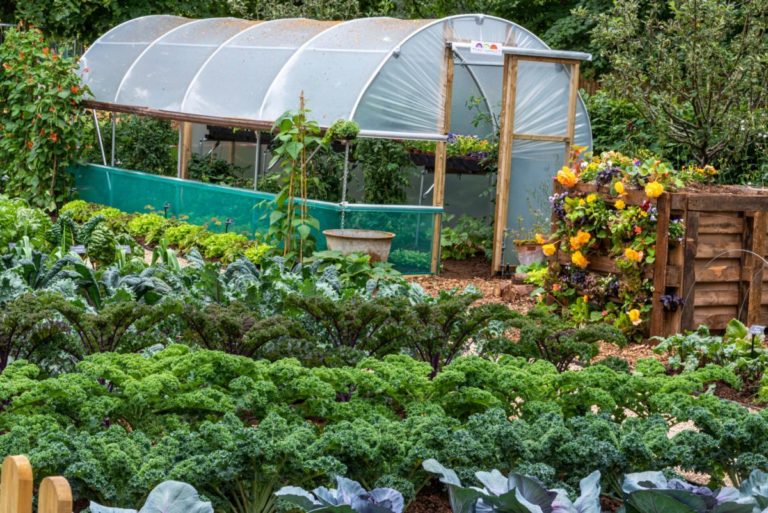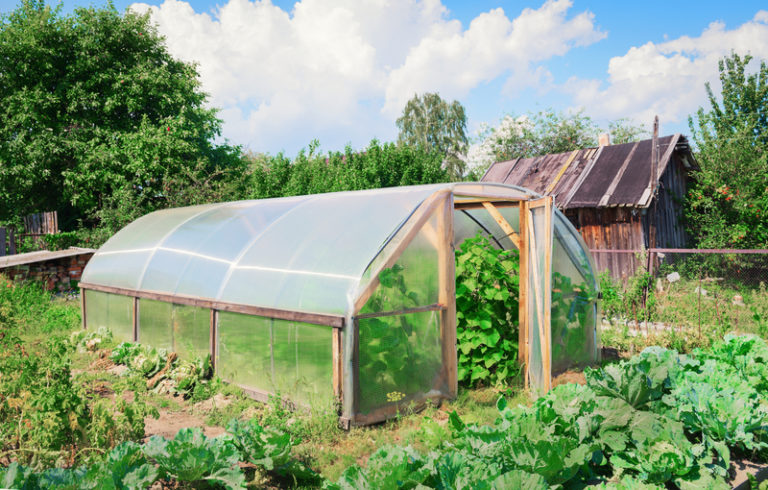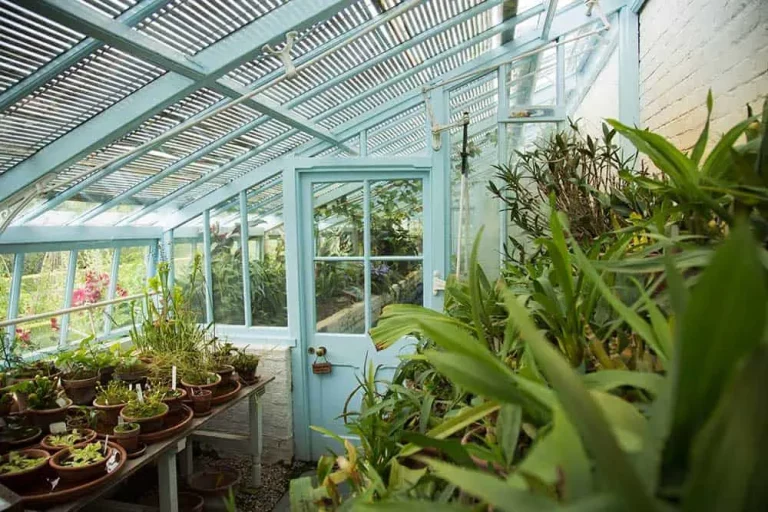Transform your kitchen garden into a thriving oasis of fresh flavors with the easy-to-follow guidance of Grow Your Own Herbs: A Beginner’s Guide.
This comprehensive handbook will walk you through every step of growing and caring for your own herb plants, from choosing the right soil and lighting to harvesting and preserving your bountiful crop.
With its gentle learning curve and generous support for beginners, this guide makes it simple to start enjoying the benefits of homegrown herbs today.
Start with easy-to-grow herbs
Choose herbs that are easy to grow and maintain, such as basil, mint, and cilantro. These herbs are hardy and can thrive in a variety of conditions.
These herbs are a great choice for beginners because they are hardy and can thrive in a variety of conditions.
Basil, for instance, is a popular herb that grows well in well-drained soil and full sun.
It’s also a great choice for container gardens, as it can be grown in pots and planters.
Mint, on the other hand, prefers moist soil and partial shade, making it an excellent choice for shaded areas.
Cilantro, known for its delicate flavor and aroma, is easy to grow and can be harvested in as little as three weeks.
All of these herbs are easy to maintain and can be grown year-round, making them perfect for both beginner and experienced gardeners alike.
Choose the right potting mix
Use a well-draining potting mix that is specifically designed for herbs. This will help prevent waterlogged soil and ensure that your herbs receive enough oxygen.
When it comes to potting herbs, choosing the right mix is important for their health and longevity.
A well-draining potting mix that is specifically designed for herbs is essential to prevent waterlogged soil and ensure that your herbs receive enough oxygen.
Look for a mix that is lightweight, yet retains moisture well, as this will provide your herbs with the ideal growing conditions.
Avoid using regular garden soil or a mix that contains peat, as these can retain too much water and cause root rot.
Instead, opt for a mix that contains a blend of organic materials such as perlite, vermiculite, or coconut coir, which will provide better drainage and aeration.
This will help your herbs grow strong and healthy, and will also make it easier to control the amount of water they receive.
By selecting a high-quality potting mix specifically designed for herbs, you can ensure that your plants receive the optimal growing conditions and thrive.
Provide the right amount of light
Most herbs need at least 4-6 hours of direct sunlight per day. If you don’t have a sunny location, you can also use grow lights to provide the necessary light.
To ensure optimal growth and development, most herbs require at least 4-6 hours of direct sunlight per day.
This is especially true for leafy herbs like basil, mint, and cilantro, which thrive in bright, indirect light.
If you don’t have a sunny location, you can still grow herbs successfully using grow lights.
There are a variety of grow lights available, including LED, fluorescent, and incandescent options.
When choosing a grow light, consider the size of your growing space, the type of herbs you’re growing, and the intensity of light required for each plant.
For example, leafy herbs like basil and mint require a slightly lower intensity light, while herbs like lavender and rosemary can tolerate more intense light.
To provide the right amount of light for your herbs, place the grow light at a distance of 6-12 inches from the plants, and adjust the light intensity as needed based on the specific requirements of each herb.
Proper lighting will not only promote healthy growth, but also enhance the flavor and aroma of your herbs.
Water correctly
Herbs need consistent moisture, but they can be susceptible to overwatering. Check the soil daily and only water when the top inch of soil feels dry to the touch.
To ensure optimal health and growth of your herbs, it is important to water them correctly.
While herbs need consistent moisture, they can be susceptible to overwatering, which can lead to root rot and other problems.
Therefore, it is essential to check the soil daily and only water when the top inch of soil feels dry to the touch.
This means that you should not water your herbs based on a fixed schedule, but rather respond to their individual needs.
By feeling the soil, you can determine the exact amount of moisture your herbs require, and avoid overwatering.
It is important to water your herbs deeply and infrequently, rather than shallowly and frequently, as this encourages deep root growth and makes them more resilient to drought.
Fertilize regularly
Use a balanced fertilizer to provide your herbs with the nutrients they need to grow and thrive. You can also use compost tea as a natural fertilizer.
Regular fertilization is important for your herb garden’s health and success.
A balanced fertilizer provides your herbs with the essential nutrients they need to grow and thrive.
Look for a fertilizer that is specifically formulated for herbs, and follow the manufacturer’s instructions for application rates and timing.
A general rule of thumb is to fertilize your herbs every 1-2 weeks during the growing season, which is typically from spring to fall.
You can also use compost tea as a natural and nutritious fertilizer.
Compost tea is made by steeping compost in water, creating a nutrient-rich liquid that can be applied to your herbs as a foliar spray or soil drench.
This will not only provide your herbs with essential nutrients, but also help to improve the soil structure and promote beneficial microorganisms.
By regularly fertilizing your herb garden, you can ensure that your plants are receiving the necessary nutrients to grow and produce healthy, flavorful foliage.
Prune regularly
Prune your herbs regularly to encourage bushy growth and prevent them from becoming leggy. Pinch off the top sets of leaves to promote branching.
Regular pruning is essential for maintaining healthy and bushy growth of herbs.
When herbs are allowed to grow unchecked, they can become leggy and produce fewer leaves, which can ultimately lead to a decrease in flavor and aroma.
By pruning your herbs regularly, you can encourage bushy growth and prevent legginess.
To prune your herbs, simply pinch off the top sets of leaves to promote branching.
This will help the plant focus its energy on producing new growth, rather than just vertical growth.
Pruning can help to reduce the risk of pests and diseases, as it removes any weak or damaged branches that may be more susceptible to infestation.
By regularly pruning your herbs, you can keep them healthy, productive, and looking their best.
Harvest regularly
Harvest your herbs regularly to encourage new growth and prevent them from flowering. Use scissors or pinch off the leaves with your fingers to harvest.
To ensure the optimal growth and flavor of your herbs, it is important to harvest them regularly.
This practice not only promotes new growth but also prevents the herbs from flowering, which can affect their flavor and aroma.
To harvest, simply use scissors to cut off the leaves or pinch them off with your fingers.
For delicate herbs like basil, it’s best to pinch off the leaves to avoid damaging the plant.
Regular harvesting also helps to prevent over-growth, which can lead to a decrease in flavor and aroma.
By harvesting your herbs regularly, you’ll be able to enjoy their full potential and extend their growing season.
Multiply your herbs
Many herbs can be easily propagated through cuttings, division, or seed. Take cuttings from your healthiest herbs to create new plants, or divide your herbs when they become too large. You can also save seeds from your herbs to grow new plants the following season.
When it comes to multiplying your herbs, there are several effective methods to choose from.
One of the easiest and most reliable methods is taking cuttings from your healthiest herbs.
To do this, simply cut off a section of the herb plant, making sure each cutting has at least two nodes (the bumps on the stem where leaves meet).
Remove lower leaves, and allow the cutting to dry out for a day or two to form a callus.
Then, plant the cutting in well-draining soil and keep it in a warm, sunny location.
With proper care, you can expect new roots to develop within a few weeks, and a new, healthy herb plant to emerge.
Another effective method is dividing your herbs when they become too large.
This is best done in the spring or fall, when the plant is not actively growing.
Simply dig up the entire plant, and gently separate the roots and stem into smaller sections.
Replant each section in well-draining soil, making sure each division has at least one good-sized root and a few healthy leaves.
This method not only multiplies your herbs, but also helps to rejuvenate the original plant by removing some of the age and overgrowth.
Saving seeds from your herbs is another way to multiply your herbs and ensure a continuous harvest.
Many herbs, such as basil and cilantro, produce a bounty of seeds that can be saved and planted the following season.
Simply allow the flowers to bloom and die back naturally, then harvest the seeds and dry them in a cool, dark place.
Store the seeds in an airtight container, and they will be ready to plant the following season.]
Multiplying herbs is a simple yet effective way to increase your herb supply and ensure a continuous harvest.
One of the easiest methods is taking cuttings from your healthiest herbs, which can be done in the spring or fall when the plant is not actively growing.
To take cuttings, simply dig up the entire plant, and gently separate the roots and stem into smaller sections.
Each section should have at least one good-sized root and a few healthy leaves.
Replant each section in well-draining soil, and keep the soil consistently moist but not waterlogged.
This method not only multiplies your herbs but also helps to rejuvenate the original plant by removing some of the age and overgrowth.
Another way to multiply your herbs is by dividing the roots.
When dividing the roots, make sure to separate the roots into sections that have at least two healthy-looking eyes or buds on each section.
Each section should have enough roots and foliage to support healthy growth.
Replant the sections in well-draining soil, and water thoroughly.
You can save seeds from your herbs to propagate new plants in the future.
Some herbs, such as basil and coriander, can be saved directly from the garden, while others, such as rosemary and thyme, should be dried and saved indoors.
To dry herb seeds, tie small bunches of the herbs together with string, and hang them upside down in a warm, dry place out of direct sunlight.
Once the herbs are fully dry, strip off the leaves and store the seeds in an airtight container.
Sown in a potting mix, these seeds will germinate in about two weeks.]
Multiplying your herbs through cuttings, division, or seed can help you increase your herb supply and reduce the need for frequent purchases.
Taking cuttings from your healthiest herbs is a simple and cost-effective way to propagate new plants.
To take cuttings, select a healthy, woody stem with at least two nodes (the swollen areas where leaves are attached) and cut it from the parent plant.
Remove any lower leaves, leaving only the top two or three sets of leaves, and plant the cutting in well-draining soil.
Keep the soil consistently moist, but not waterlogged, and the cutting should root within a few weeks.
When dividing the roots, make sure to separate the roots into sections that have at least two healthy-looking eyes or buds on each section.
Each section should have a decent amount of root mass and be free of diseases or pests.
You can also try sowing herb seeds directly in the garden, or starting them indoors in seed trays or pots.
Remember to provide the new plants with the appropriate amount of sunlight, water, and nutrients for optimal growth.
With proper care, your herbs can thrive and provide you with fresh flavors for years to come.
Want More? Dive Deeper Here!
Hey there! If you’re the type who loves going down the rabbit hole of information (like we do), you’re in the right spot. We’ve pulled together some cool reads and resources that dive a bit deeper into the stuff we chat about on our site. Whether you’re just killing time or super into the topic, these picks might just be what you’re looking for. Happy reading!






